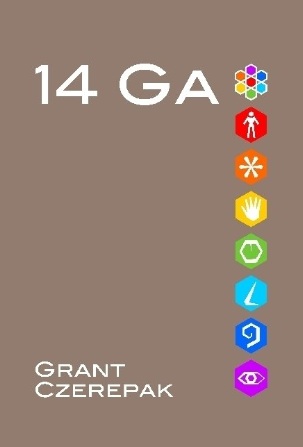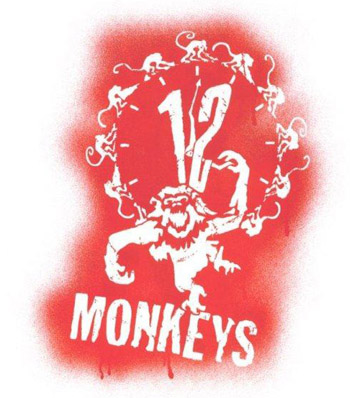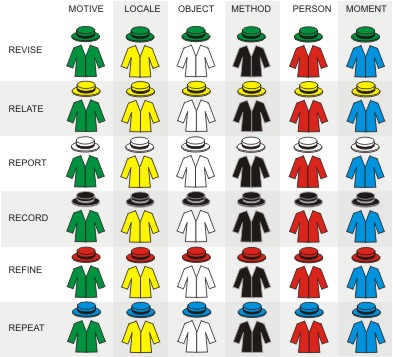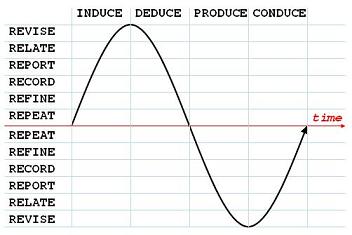Elizabeth Kübler-Ross
For many years, people with terminal illnesses were an embarrassment for doctors. Someone who could not be cured was evidence of the doctors’ fallibility, and as a result the doctors regularly shunned the dying with the excuse that there was nothing more that could be done (and that there was plenty of other demand on the doctors’ time).
Elizabeth Kübler-Ross was a doctor in Switzerland who railed against this unkindness and spent a lot of time with dying people, both comforting and studying them. She wrote a book, called ‘On Death and Dying’ which included a cycle of emotional states that is often referred to (but not exclusively called) the Grief Cycle.
In the ensuing years, it was noticed that this emotional cycle was not exclusive just to the terminally ill, but also other people who were affected by bad news, such as losing their jobs or otherwise being negatively affected by change. The important factor is not that the change is good or bad, but that they perceive it as a significantly negative event.
The Grief Cycle
The Grief Cycle can be shown as in the chart below, indicating the roller-coaster ride of activity and passivity as the person wriggles and turns in their desperate efforts to avoid the change.

The initial state before the cycle is received is stable, at least in terms of the subsequent reaction on hearing the bad news. Compared with the ups and downs to come, even if there is some variation, this is indeed a stable state.
And then, into the calm of this relative paradise, a bombshell bursts…
The Induction/Deduction Change Cycle
I think that the grieving processs is considerably more universal than it first appears. The grieving process is in reality the way we deal with any change psychologically, social-psychologically or sociologically on a micro, meso or macro scale. And depending on the scale, the seven stages can occur over minutes, over years, even centuries.
In the list I have below I compare the resistance or friction to change with the action of change:
- Occurrence – Recept State – Singularity – Exception occurs – Contacts
- Shock or Disbelief – Cord State- Attempt to maintain current schedule (events) – Factums
- Denial – Port State- Attempt to maintain current tools (location) – Factories
- Anger – Record State – Attempt to maintain current domains (products) Factities
- Bargaining – Report State – Attempt to maintain current attributions (services) – Factors
- Depression – Accord State – Attempt to maintain current organization (contacts) – Factotums
- Testing – Apport State – Attempt to maintain current motives (goals) – Factuals
- Hope – Accept State – Pluralarity – Attempt to maintain existence (reality) – Facts
As you can see the fit with the Systema model is quite good and my “Fact” vocabulary fits well, too. The process is inductive, you can call it the death cycle. It works its way through the system structure, be it a person, group or hierarchy. It also reveals something else, how each level of the organism will react. Followed by induction, the tearing down of a belief system, we deal with deduction, which is building up a new belief system, the deductive lifecycle.
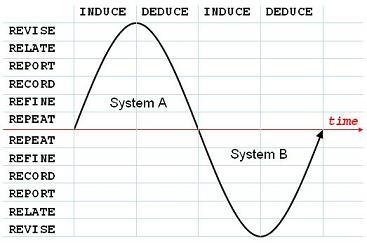
At the midpoints of the cycle exist singularities or infinity points. At the top and bottom of the cycle exist pluralarities or zero points.
The OODA Loop
Colonel John Boyd, understood how to use induction and deduction against the enemy. He knew that if you could disrupt the timing of your opponent you could disrupt everything else. If your opponent lost his timing he would be in the wrong location with the wrong product for providing the wrong service to the wrong contact with the wrong goal. Accelerate your cycle’s timing and your opponent is overwhelmed.
Incompetence
Norman Dixon, in his book, On the Psychology of Military Incompetence, provides a broad range of definitions of military incompetence, however Elizabeth Kübler-Ross boils it down to two phenomna with regard to change:
Getting Stuck
A common problem with the above cycle is that people get stuck in one phase. Thus a person may become stuck in denial, never moving on from the position of not accepting the inevitable future. When it happens, they still keep on denying it, such as the person who has lost their job still going into the city only to sit on a park bench all day.
Getting stuck in denial is common in ‘cool’ cultures (such as in Britain, particularly Southern England) where expressing anger is not acceptable. The person may feel that anger, but may then repress it, bottling it up inside.
Likewise, a person may be stuck in permanent anger (which is itself a form of flight from reality) or repeated bargaining. It is more difficult to get stuck in active states than in passivity, and getting stuck in depression is perhaps a more common ailment.
Going in Circles
Another trap is that when a person moves on to the next phase, they have not completed an earlier phase and so move backwards in cyclic loops that repeat previous emotion and actions. Thus, for example, a person that finds bargaining not to be working, may go back into anger or denial.
Circling is itself a form of avoidance of the inevitable, and going backwards in time may seem to be a way of extending the time before the perceived bad thing happens.
Related Posts:
